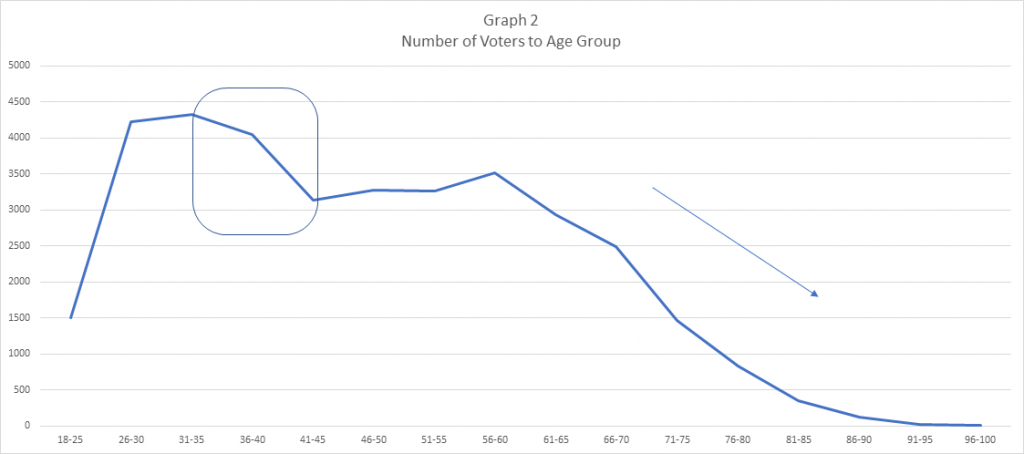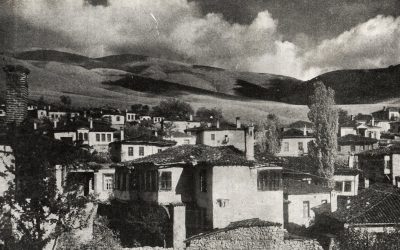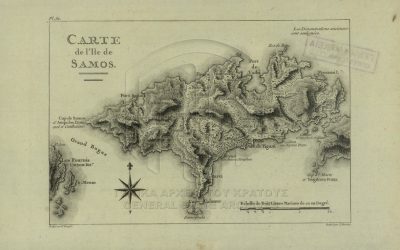In June 2020, a special article presenting statistics on naming patterns in the prefecture of Chania, Crete, was published on Greek Ancestry. That analysis was based on our database of Male Register records of approximately 56,500 individuals born in the area of Chania between 1850 and 1910, which is searchable on Greek Ancestry. Coming up with very interesting findings, we decided to run more statistical analyses, of different kinds and for various areas of Greece, always based on our databases. Such analyses can offer significant insights into family history and facilitate the work of the researcher, by answering questions we would be otherwise unable to answer. One of these questions is “How long did our ancestors used to live”. This is the question that the present article originally set out to answer; nonetheless, as it will be seen, additional interesting information was revealed.
The sample
The sample of this analysis comes from a database which was recently published on Greek Ancestry and consists of Parish Voter Lists of about 100 villages of the area of Lakonia, spanning from 1912 to 1940 and including over 36,000 records primarily of male voters. The voters were generally older than 25yo, married or not, but, in any case, to some extent financially independent. The lists were created locally, at parish level, and were updated every time a new priest was to be appointed. Therefore, their data are quite reliable, unlike those of other types of records, such as 19th-century voter lists for parliamentary elections which, due to problematic updates, present significant errors in the noted age of the voters. The records include the individual voter’s name, age, father’s name, sometimes his occupation or other information in form of a side note. To learn more about Parish Voter Lists, click here.
As the voters’ ages and years of birth are what this article is interested in, those records which did not indicate the voter’s age, or that was illegible, have not been included in any of the following calculations and analyses. Eventually, the sample consists of 35,498 records. While the Parish Voter Lists span from 1912 to 1940, only abt. 1,700 records are from the 1910s, when 32% of the records are from the 1920s and 60% from the 1930s. The average year of the database’s records’ creation is 1931.
The findings
Every time a new parish voter list was composed, the voters’ age was also registered. Graph 1 shows the ages registered for all the 35,498 voters. The registered ages are shown on the horizontal axis, while the number of people bearing them is shown on the vertical one.

- Rounded ages
Following the blue line, what strikes the eye first and foremost are the peaks displayed. Assuming that population increase or decrease are relatively steady, we would expect to see a rather linear graph. Nonetheless, what we see is a very serrate plot, where, for instance, 1,247 people are shown in the lists as being 30 years old, while only 656, about half, are shown as being 29 years of age. Accordingly, 1,019 men are shown to be 60 years old, but only 440 were 61 years of age.
Clearly, the ages were being significantly rounded. In other words, someone who was 29 or 31 years old was registered in the list as being 30 years old. The ages suitable for rounding are generally those close to numbers like 30, 40, 50 etc., but what we also see is that numbers like 35, 45, 55 etc. also show peaks, which indicates they were also used for the rounding of others. Interestingly, throughout the graph, these numbers (35, 45, 55 etc.) always display a shorter peak than 30, 40 or 50 do.
2. Old after 60
Turning to the original question of the analysis, it becomes clear from the graph that the time when someone was considered old and his chances of passing were significantly increased was after the 60-65 years of age. After 70, the decrease in the graph is even steeper. 1,019 people were registered as being 60 years old, 897 people as being 65yo, 677 as being 70yo and only 357, or 1%, as being 75yo. In total, those voters who were registered as being 70yo or older represent only 9% of the sample. Only 35 out of 35,498 people made it into their 90s.
The oldest recorded man in the lists was Panagiotis Tsarouchas, son of Kyriakos, a resident of Dafni, who was 99 years old in 1931, having been born around 1832. Nikolaos Marousis of Pakia was born in 1821, the year when the Revolution started, and was 95yo in 1916. Georgios Zoumpoulakos of Chatziaga (now known as Agios Stefanos, Nomia, Monemvasia) was born in 1817 and was 95yo in 1912.
If 1,019 people made it to the age of 60, but only 677 to the age of 70, that means someone had 33.5% chances to die within that timeframe. Someone aged 70 had 47.2% chances to pass within the next five years and 68.8% chances to pass before he would reach 80. In 2017, life expectancy in Greece was about 81.5 years, and 78.5 years in the United States.
3. A generational gap
Interestingly, Graph 1 reveals one more point: 1,247 people were registered as being 30yo, but 1,049, or approximately 16% less, as being 40yo. This decrease is displayed more clearly in Graph 2. What is interesting is that the decrease is not continued into the age of 40s or 50s. Instead, more or less, we find the same number of voters between the age of 40 and 60: 1049 people aged 40, 1020 aged 50, 1019 aged 60.


Graph 3 was created after we calculated the year of birth of each of the 35,498 voters of the database. Those voters who were born prior to 1872 are those who were around 60yo when the voter lists were composed, therefore the decrease in their number, as we follow the line to the left, makes sense. However, if we take a look to the right, to that part of the graph between years 1872 and 1890, approximately, we see a clear decrease in the number of voters born during that time period. According to the lists, 806 of the voters were born in 1872, but only 504 were born in 1886. Based on the graph, the decrease was steeper during the 1880s.

To be sure, this does not necessarily indicate that fewer children were born in that time period. Besides, compared to other decades, the 1880s were not a decade of crisis. No war took place and the raisin crisis, which severely hurt the economy of the Peloponnese, broke out only in the 1890s. So if aging, natural mortality or less births are not the reasons behind this decrease, the cause has to be sought elsewhere.
The men who were born in the 1880s were those who migrated to the United States of America at the end of the 19th and in the first decade of 20th century. Young and eager to work, they left Greece, moved to the New World and, most of them, never returned home. Upon their departure, they left a generational gap behind. However, by the 1920s and 1930s, the villages of Lakonia had renewed their youth.
(1) Greek Ancestry’s database of Lakonian Parish Voter Lists is accessible through: https://greekancestry.net/lakonia/
(2) Cite this article: Gregory Kontos, ‘Statistics Meet Genealogy: Male Aging Patterns in Lakonia (1910s-1930s)’, posted on GreekAncestry.net on September 12th, 2020.



